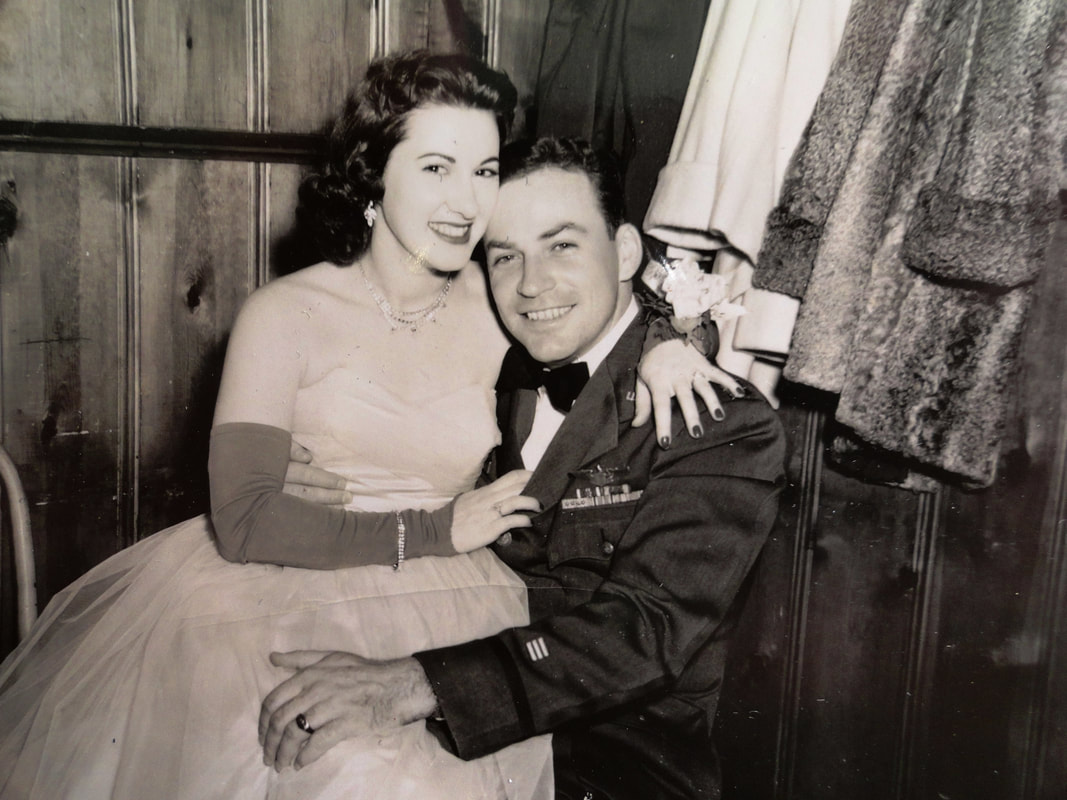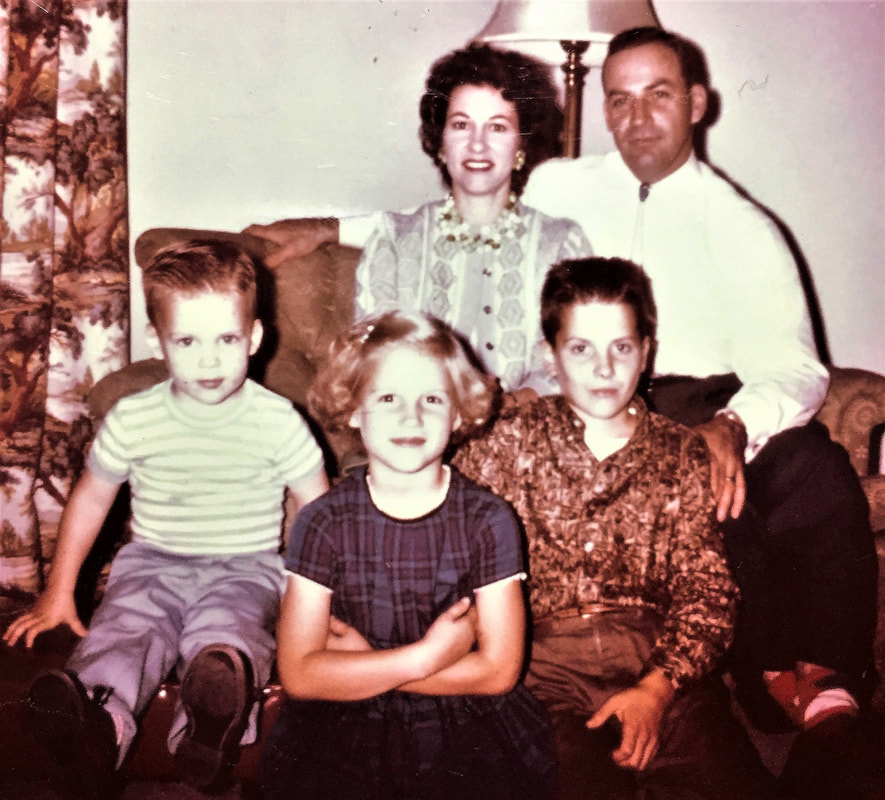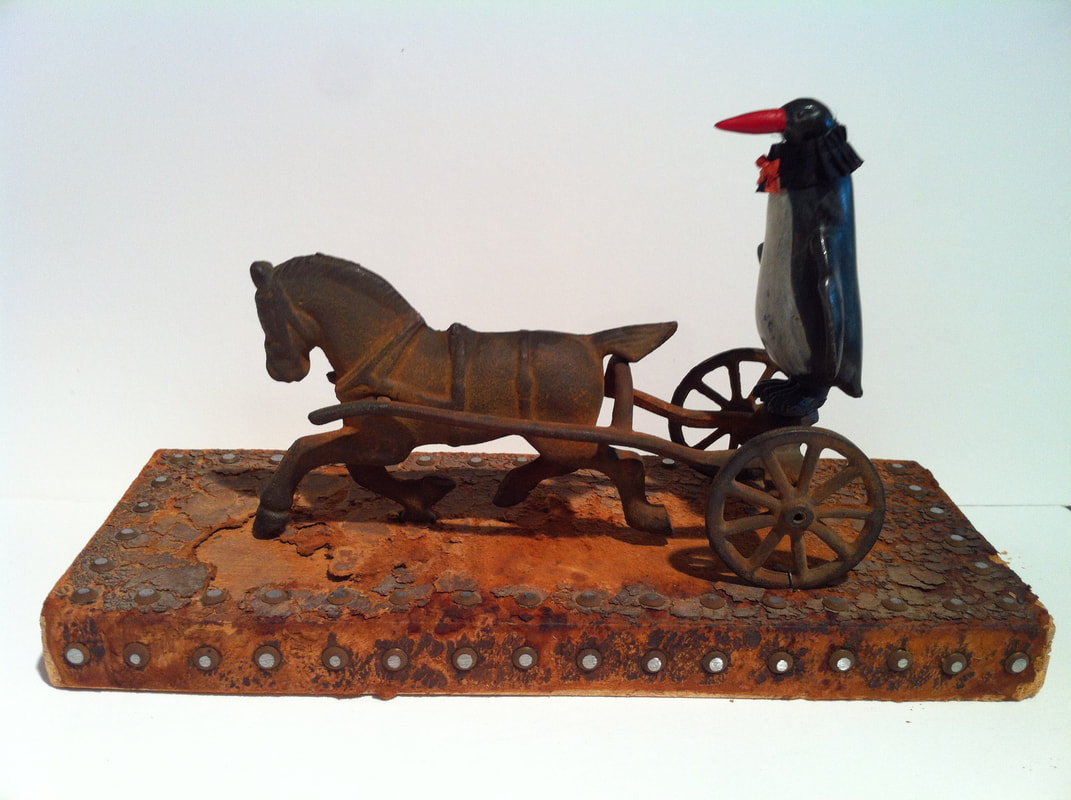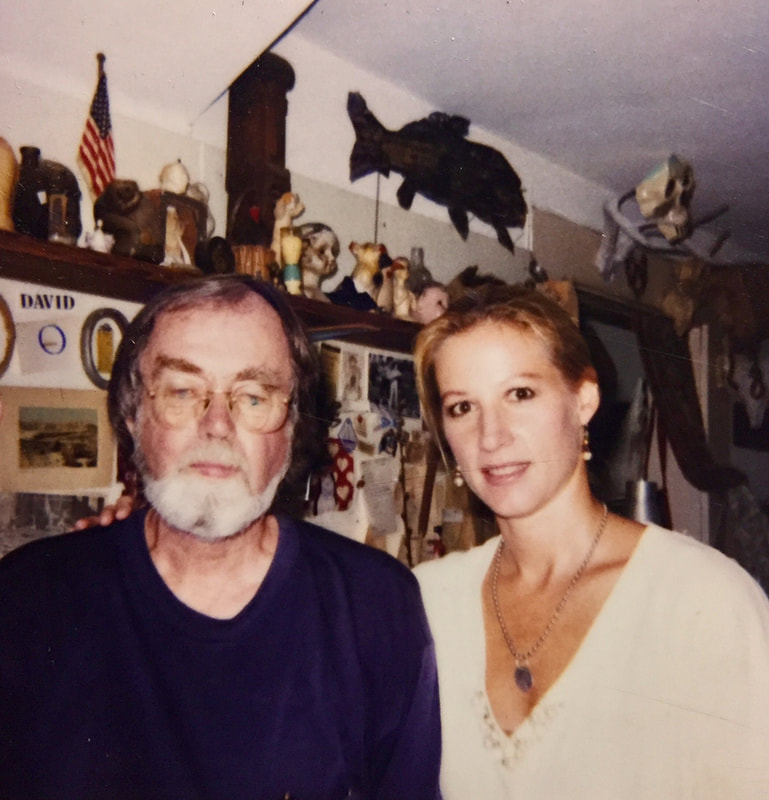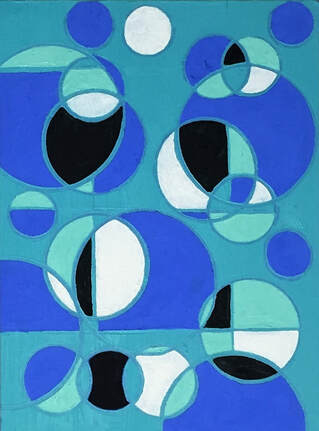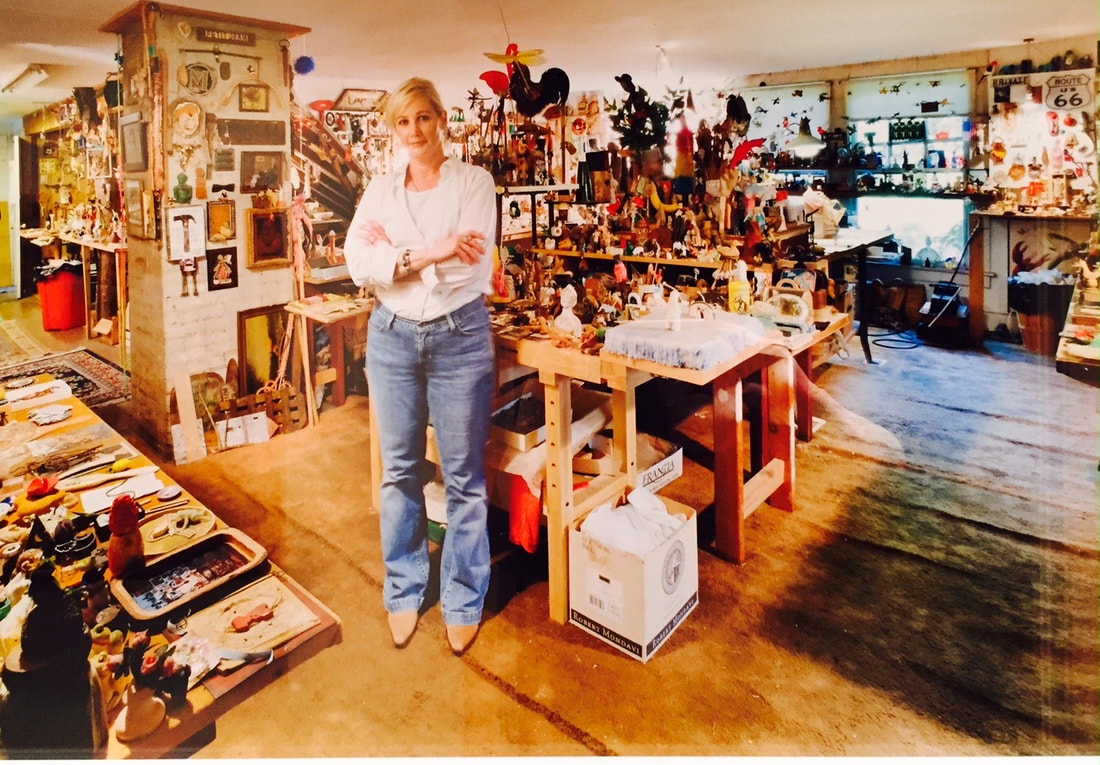Zhaira Costiniano From a young age, your parents introduced you to the art of creating: you often drew outdoors with your mother, and your father taught you how to build things. Can you talk to me more about how those experiences impacted your art and how you see things?
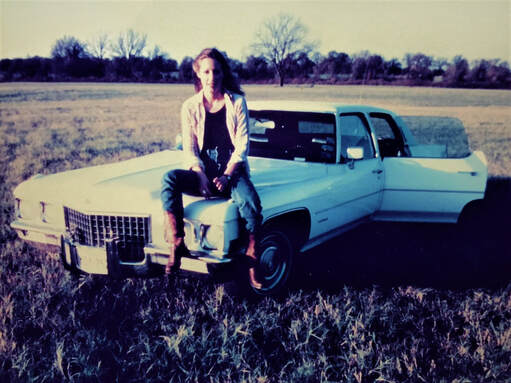 Photo of the Artist, Robin Ragin
Photo of the Artist, Robin Ragin
Robin Ragin My father was often traveling via his USAF fighter pilot career demands, and my mother provided all of us a strong foundation in a connected home life, connected to grandparents and aunts and uncles and cousins who lived nearby. The first 10 years of life in St. Louis was a rather golden time in my childhood - I was the only girl in the family, the only granddaughter and niece, which gave me a slight advantage over brothers and cousins in time spent one-on-one with all of my grandparents and aunts and uncles - they all encouraged me to draw what I saw around me, my grandmother’s beloved chickens and my father’s airplanes sitting on the tarmac at the base. So from an early start, I was fortunate to have encouragement from everyone in my family. My mother had an eye for interior design, so our home was always beautifully decorated with modern furniture and art - she painted portraits and landscapes. The first time she opened her paint box I was hooked - turpentine and oil wrapped around me like a blanket. So I spent time surrounded by her art in interiors created by her hand. When my father was home, he was always building or repairing something - he could fix anything and create furniture and lamps and toy cars for us. I loved his garage and shop and basement worktables, and the smell of enamels and adhesives of all sorts. So both of them offered up to me these things from a very early age.
ZC Being a part of a military family can be challenging to say the least. Did moving around often have a profound impact on you? Some people take to it better than others.
ZC Being a part of a military family can be challenging to say the least. Did moving around often have a profound impact on you? Some people take to it better than others.
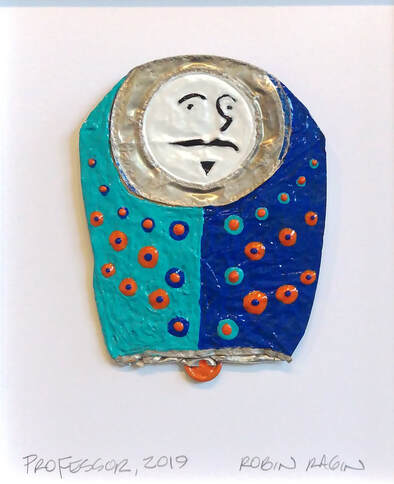 Professor, 2019, Found aluminum beverage can, acrylic, 10 × 8 1/2 in
Professor, 2019, Found aluminum beverage can, acrylic, 10 × 8 1/2 in
RR As a child, you don’t really think about what moving so often means - I loved the excitement of starting the school year in a new place, meeting new friends, experiencing new cities and neighborhoods. I developed a lifelong love of the US Post office, using mail to stay in touch with family and friends. My brothers and I were all involved in athletics, which also widened our circles in each new place. Later in life, when I think of our transient life, I feel it gave each of us an easygoing friendliness, an openness to new things, which has served me well. My husband often comments that I’ll talk to anyone. I guess I learned to like people!
ZC So I imagine with such an artistic, supportive family, going to college for art was a no brainer for you.
RR My family was rather conservative, and as I was the only girl, my mother and grandmothers looked to me for that big wedding and those grandchildren...growing up in the 1960’s meant I was thought to move the family forward to the next generation by marrying and raising children. So pursuing a college degree and career of any sort was not a priority in their minds for me. It was understood that if I wanted to pursue a college degree, I would have to do it myself, fund it myself and find a way to go. So I worked part-time jobs so I could attend classes, in Maryland and California and Texas. My transient childhood seemed to continue into my college classes, so I missed out on knowing college professors well enough to gain the help and mentorship they provided to other students. I wish I had stayed in one place.
ZC So I imagine with such an artistic, supportive family, going to college for art was a no brainer for you.
RR My family was rather conservative, and as I was the only girl, my mother and grandmothers looked to me for that big wedding and those grandchildren...growing up in the 1960’s meant I was thought to move the family forward to the next generation by marrying and raising children. So pursuing a college degree and career of any sort was not a priority in their minds for me. It was understood that if I wanted to pursue a college degree, I would have to do it myself, fund it myself and find a way to go. So I worked part-time jobs so I could attend classes, in Maryland and California and Texas. My transient childhood seemed to continue into my college classes, so I missed out on knowing college professors well enough to gain the help and mentorship they provided to other students. I wish I had stayed in one place.
ZC What type of art were you creating during this time? You have such a unique voice in your art, by this time, had you found it yet? Were you already interested in found objects?
RR Like most students of art, I absorbed everything I could get my hands on, took every design and art class I could fit into my schedule. With an interior design interest, my first paintings were what you might call more decorative. At the University of Maryland, the only Friday class that would fit into my schedule in my first semester was handmade paper. It changed how I looked at paper and 2-D vs 3D artworks. I adored the entire process of taking cotton patches and turning them into paper pieces. Most of them were abstract but many were landscapes. They helped me move from the difficulties of painting to seeing I could create a work of art using a unique and different material. And it was a forerunner to working with found objects. I still have some of the handmade paper pieces I created that semester.
RR Like most students of art, I absorbed everything I could get my hands on, took every design and art class I could fit into my schedule. With an interior design interest, my first paintings were what you might call more decorative. At the University of Maryland, the only Friday class that would fit into my schedule in my first semester was handmade paper. It changed how I looked at paper and 2-D vs 3D artworks. I adored the entire process of taking cotton patches and turning them into paper pieces. Most of them were abstract but many were landscapes. They helped me move from the difficulties of painting to seeing I could create a work of art using a unique and different material. And it was a forerunner to working with found objects. I still have some of the handmade paper pieces I created that semester.
ZC Going back to the lack of mentorship you received from your professors, do you think your relationship with David McManaway helped fill that void you were looking for?
RR The only college professor that was a profound influence on me was Professor Tom Motley at Richland College here in Dallas. I took classes from him in art history, world literature and drawing. He lit up the room with his knowledge and experiences on his European sabbaticals. His classes were rich in learned details gathered throughout his travels, and he inspired me to draw more often, to research art history projects, and I continue to have the good fortune to know him as a friend and fellow artist. He has helped me with the current Grace Museum exhibitions, and has written about my apprenticeship with David McManaway and my efforts to rescue his art and studio.
RR The only college professor that was a profound influence on me was Professor Tom Motley at Richland College here in Dallas. I took classes from him in art history, world literature and drawing. He lit up the room with his knowledge and experiences on his European sabbaticals. His classes were rich in learned details gathered throughout his travels, and he inspired me to draw more often, to research art history projects, and I continue to have the good fortune to know him as a friend and fellow artist. He has helped me with the current Grace Museum exhibitions, and has written about my apprenticeship with David McManaway and my efforts to rescue his art and studio.
|
David did indeed fill the gap for me. It was later in life, for both of us. And I think that was a real benefit. He helped develop my eye, and the possibilities of creating a work of art with a unique material. When we began working together, he didn’t realise I brought to the table all of the skills and knowledge I learned in my father’s shop. So when he learned that early on, it was a lightbulb moment for both of us. Working in David’s studio exposed me to a whole new way of looking at a work of art.
ZC What was it like for you to recreate his studio for the Grace Museum? RR When David died in 2010, I knew that the house and studio would one day have to sell in order to support his widow Norma. It was another death to me to have to dismantle it- it took me 18 months of working by myself surrounded by the ghosts of that home and studio. I saved as much as I could, and tucked it away in storage with the hope that one day I could recreate his fantastical studio spaces for a gallery or museum show. It was Tom Motley that encouraged me to save tabletop items and graphics toward this end. When Judy Deaton, Curator at the Grace first approached me about putting together a David McManaway exhibition, I knew that my dream for David’s studio had come true. It took 10 years, but with the help of Tom Motley and Judy Deaton, we made it a reality. Restoring the wall panels for the exhibition |
was truly a labor of love. It was an interesting exercise in the choices that an artist has to make, and I felt that David was looking over my shoulder, guiding my choices. I hope that the studio recreation helps give viewers a glimpse into David’s world, and I am honored and humbled to be the one to bring this to the public. And a little proud too.
ZC Many artists are having to deal with cancelled exhibitions, or ones that are up, but no visitors are allowed to view them because of the quarantine. How have you felt about this?
RR Honestly, I am devastated and disheartened that no one can see these exhibitions. Physically, I hauled and packed up most of David’s artworks in the “Cult of the Commonplace” exhibition. Each piece required particular attention to details (how do you pack a walking stick with 6 fragile teabags hanging from it?). So there was a lot of work involved in removing from storage, cleaning and preparing every piece to travel to Abilene. Tom Motley and I took many road trips to plan and prepare and install the shows. My hope is that folks will have the opportunity to see these shows when the Grace re-opens - all of these exhibitions are scheduled to show until August 15th. So I am back in my studio painting and trying not to think about it too much right now.
RR Honestly, I am devastated and disheartened that no one can see these exhibitions. Physically, I hauled and packed up most of David’s artworks in the “Cult of the Commonplace” exhibition. Each piece required particular attention to details (how do you pack a walking stick with 6 fragile teabags hanging from it?). So there was a lot of work involved in removing from storage, cleaning and preparing every piece to travel to Abilene. Tom Motley and I took many road trips to plan and prepare and install the shows. My hope is that folks will have the opportunity to see these shows when the Grace re-opens - all of these exhibitions are scheduled to show until August 15th. So I am back in my studio painting and trying not to think about it too much right now.
|
ZC That’s really heart wrenching to hear. I can only imagine how frustrating and disappointing that must be for you. Has the art you create in the studio changed at all to reflect our current reality, or have you found things to remain unchanged?
RR Well, we are all in the same boat, so many museums and galleries shuttered now. There must be many artist organizations feeling the same thing. The crop circle series of paintings that I am currently working on have had to wait until I completed everything associated with the Grace Museum exhibitions. They are influenced by the lovely memories of flying with my father, over fertile fields of irrigation patterns below. It is a calming and tranquil mindset for me as I work, and a cherished time as well - so much of my time has been taken up caring for David’s widow Norma, that I relish the days in the studio now. So I appreciate each moment working on this series now. |

